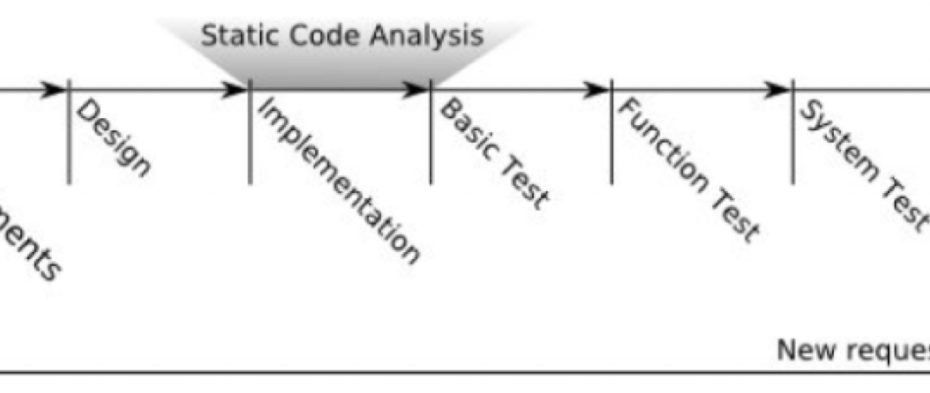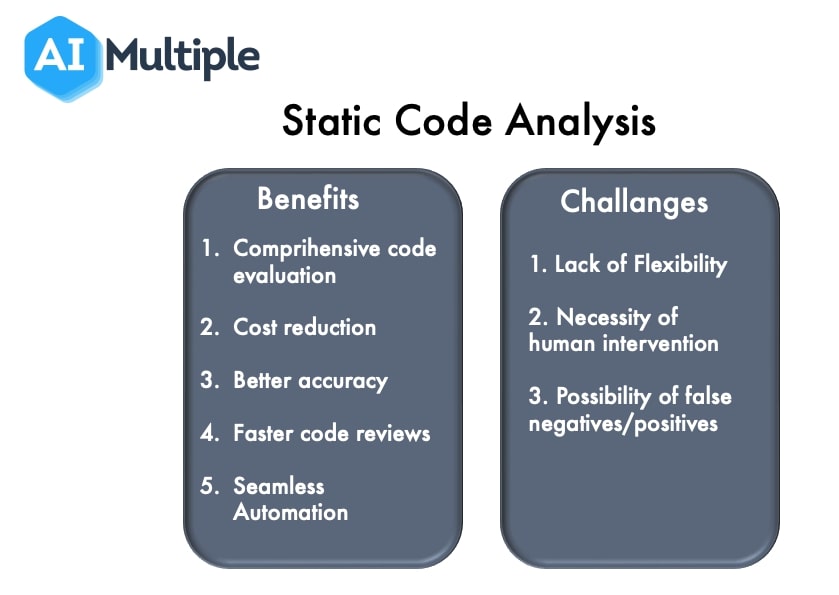Static code analysis examines software code without executing programs built from that code. It analyzes code while the software is in a static state to find vulnerabilities and defects early in the development lifecycle. This white-box testing method provides several benefits but also poses some challenges for teams to consider.
What is Static Code Analysis?
Static code analysis, also known as static analysis, analyzes application source code to detect bugs, security flaws, and quality issues without running the code. It examines the static representation of the code to understand all possible run-time behaviors.
Unlike dynamic testing methods, static analysis does not require executing the code. It reviews the code statically, without compiling or deploying the application. This allows issues to be identified much earlier in the development lifecycle.
Static code analysis analyzes code statically before testing begins. Source: Research.marketingscoop.com
When is Static Code Analysis Performed?
Static code analysis is primarily performed during the initial phases of the software development lifecycle, before dynamic testing begins. It can be run as soon as code is written, even before compilation.
Conducting static analysis early allows vulnerabilities, bugs, and quality issues to be identified and remediated sooner. This prevents defects from persisting deeper into the development lifecycle, which is more costly to fix.
Figure 1: The usage of static code analysis in a development lifecycle. Source: Bardas, A.
Static analysis complements dynamic testing methods later in development, providing a comprehensive assessment of code quality and vulnerabilities before release.
Techniques Used in Static Code Analysis
There are four primary techniques used by static analysis tools:
-
Data Flow Analysis: Models and analyzes the flow of data through the program to gather run-time information when software is in a static state. This allows the tool to trace data values and understand how they impact other variables. A key benefit is detecting improper data handling that could lead to vulnerabilities.
-
Abstract Interpretation: Approximates the runtime behavior of a program by interpreting each statement and declaration as a mathematical abstraction. For example, variables are modeled as numerical ranges. This allows comprehensive analysis of code paths and data operations.
-
Taint Analysis: Models how data from untrusted sources (tainted data) flows through a program to identify vulnerabilities caused by misuse of such data. Any operations on tainted data are tracked to alert if it is used in unsafe ways.
-
Lexical Analysis: Breaks down source code syntax into tokens to simplify analysis and modification of code. This tokenization allows the source code to be processed programmatically by tools.
These techniques allow robust analysis of code behavior and data flow without execution. Modern tools combine these methods to find a wide range of issues efficiently. For example, abstract interpretation provides overview of code paths while data flow analysis tracks specific data usage in detail.
Top 5 Benefits of Static Code Analysis
Static code analysis provides several key benefits:
1. Comprehensive Code Evaluation
Static analysis can evaluate practically all code paths in an application, including complex branches and exception handling flows. It delivers more complete coverage than manual reviews or dynamic testing.
A study by Cambridge University found static analysis achieves 91% coverage on average compared to just 72% for dynamic testing. [1] It can analyze millions of code paths to find corner cases.
2. Cost Reduction
Research indicates using static analysis can reduce the cost of identifying and fixing security vulnerabilities by up to 17% compared to manual code reviews. [2]
The automated nature of static analysis provides faster detection of issues compared to manual reviews. Fixing vulnerabilities earlier avoids compounding costs later in development.
3. Better Accuracy
Static analysis tools detect 2.6 times more bugs than developer trouble reports. [3] The techniques identify hard-to-find defects that developers may miss.
Recent advances using ML have further improved accuracy. For example, GitHub‘s CodeQL tool leverages semantic code analysis to find hidden vulnerabilities with a low false positive rate.
4. Faster Code Reviews
Automated static analysis performs code reviews faster than manual reviews, improving developer productivity. It integrates seamlessly into modern CI/CD pipelines.
Studies show static analysis can perform reviews 3x faster compared to manual code inspection. [4] Developers get rapid feedback without disruption.
5. Seamless Automation
Static analysis can be fully automated, enabling integration into the CI/CD pipeline. Developers get rapid feedback on code quality without any disruption to their workflow.
Tools like SonarQube and Veracode seamlessly scan code repositories and surface actionable findings before release. This prevents defective code from being deployed.
3 Challenges of Static Code Analysis
While delivering significant benefits, current static analysis techniques have some limitations:
1. Lack of Flexibility
Static analysis is inherently limited to checking code for a fixed set of defect patterns. It can only find issues that rules have been written to detect. Machine learning has helped expand the range of detectable issues.
2. Necessity of Human Intervention
The output of static analysis tools still requires human review. The tools cannot perfectly distinguish between true positives and false positives on their own yet. However, ML has improved prioritization and accuracy.
3. Possibility of False Positives/Negatives
Static analysis can result in false positives and false negatives. False positives waste developer time while false negatives provide a false sense of security. Improvements in accuracy are needed, though newer tools are mitigating this.
When to Choose Static vs Dynamic Analysis
Static and dynamic code analysis complement each other with different strengths:
| Factor | Static Analysis | Dynamic Analysis |
|---|---|---|
| When Performed | Early dev cycles | Later dev and QA cycles |
| Code Coverage | Wider | Narrower |
| Accuracy | Lower | Higher |
| Feedback Cycle | Faster | Slower |
| Execution Overhead | None | High |
Dynamic analysis is optimal for targeted testing closer to release while static analysis is better suited for early broad detection of flaws. Using both maximizes code quality and vulnerability prevention.
Top Open Source and Commercial Tools
Some popular open source and commercial static analysis tools include:
| Tool | Description |
|---|---|
| SonarQube | Leading open source tool supporting many languages |
| Veracode | Comprehensive SaaS solution for static+dynamic analysis |
| Checkmarx | AST-based static analysis for early vulnerability detection |
| Kiuwan | ML-powered SaaS tool for multiple code languages |
| CodeQL | Advanced semantic analysis tool by GitHub |
Conclusion
Static code analysis delivers profound benefits in identifying vulnerabilities, defects, and quality issues early in development by analyzing code statically. Recent advances have expanded its capabilities and accuracy. When combined with dynamic testing, it provides end-to-end prevention of software flaws and security risks. To learn more about applying advanced static analysis, contact our experts today.


